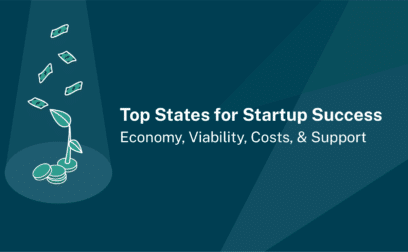TABLE OF CONTENTS
Want to buy or lease hard assets for your business? Or perhaps you have assets you wish to borrow against? Asset finance might be the solution.
Page written by Michael David. Last reviewed on October 4, 2024. Next review due October 1, 2026.

Asset finance is a term used when business borrowing is tied directly to the value of a hard asset such as property, vehicles or equipment.
If you need to acquire one of these assets but don’t have the cash to pay for it outright, or would prefer to use your cash for other purposes, asset finance allows you to spread the cost over time. You make smaller, regular payments during a fixed term. Fees and interest are charged in addition to the cost of the asset. You have full use of the asset throughout the term.
Depending on the terms, you may be responsible for the repair and maintenance of the asset or that responsibility may rest with the finance company. At the end of the term, ownership of the asset may return to the lender or be transferred to you.
Alternatively, if you already own a valuable asset and wish to access its value in cash, you may be able to transfer the asset as collateral to a lender, who provides a loan based on its value. This type of loan is known as asset refinance.
There are six main types of asset finance:
Because equipment lease agreements are based on the depreciation of the asset, not the full price, monthly lease payments are typically less than hire purchase.
The second category of asset refinance is called asset-based lending, or sale and hire purchase back. In this type of agreement, you sell a hard asset to a specialist finance company for an agreed lump sum. You then lease back the asset from the finance provider, thus repaying the lump sum. This circular arrangement allows you to free up cash immediately and pay it back in small increments over time. You also get to continue using the asset during the repayment period. Once the loan is repaid, the finance company owns the asset, and you may choose to continue renting it, buy it back or walk away.

Pros
Depending on the type of arrangement you have, it may also be possible to have the finance company cover maintenance expenses and/or replace the item if it becomes faulty during the rental or loan period.

Cons
Want help getting started on asset finance? Join Swoop to check out your options in minutes.
Delivery company. A local delivery company depends on its fleet of trucks to reach customers. There is an opportunity to expand into a nearby city, but it will mean adding at least six new trucks to the fleet. Through an agreement with a leasing company, the delivery company receives the trucks it needs in exchange for making monthly lease payments. The leasing company also offers fleet management services, which means it will maintain the trucks during the lease and dispose of them at the end of lease.
Engineering firm. An engineering firm uses high-value machinery that it owns free and clear. The company now wants to access some of the value in those machines to invest in expanding its market share. They pledge the equipment as collateral for a loan, which they use to grow into new territories. The company makes regular payments until the loan is paid back and ownership of the machinery is transferred back to the business.
The main difference between asset finance and a bank loan is that asset finance always uses a hard business asset like property, machinery or vehicles to secure funding. This allows for a lot of flexibility in term of the terms and structures that are possible, including various loans, leases and rental arrangements. It often also helps keep costs down, since any lending is secured by collateral.
Banks can also offer loans that are secured by collateral, so there can be some overlap in that sense. However, bank loans may also be secured by non-business assets, such as a personal residence, or might not have any assets for collateral at all. In these cases, banks may have different lending criteria based on things like analyzing your business operations and cash flow projections.
In some cases, asset finance is a good choice simply because other options are limited. For example, you may own valuable equipment on one hand and need an injection of cash on the other hand. In this situation, asset refinance might be the most direct way to turn a hard asset into liquid cash.
In other cases, it just makes sense from a cash flow point of view. Why sink valuable cash into a long-term purchase when those funds can be used elsewhere to grow your company? Asset lending and leasing options are available to help you acquire the tools you need right away and pay for them at a pace that you can handle.
Use our handy asset finance calculator to get an understanding of how much your loan might cost.
Your results
Finance amount
$-
Estimated interest
-%
Total repayable
$-
Monthly payments
$-
Small business loans can be used for almost every legitimate business activity. Use your loan to buy equipment, real estate, plant, vehicles, machinery, even a business. Use it as working capital to expand, start a new business, or take on more staff. You can even use a low-cost business loan to pay off more expensive short-term business debt.
The short answer is yes, you can. The longer answer is, yes you can, but do your homework first. Buying an existing business with a loan can have advantages over starting a business from scratch. You buy an established brand, an existing customer base, supplier contacts, track record, stock, perhaps even premises. Set against this are the ‘Goldilocks’ factors that lenders are looking for:
Have you thoroughly checked the accounts, the assets, spoken to suppliers and customers, researched the market value of the business, and considered the long-term potential? (It’s not a fad). Lenders need concrete answers to these questions. It pays to be prepared.
Does the business have any negative aspects – like supply chain issues, or employee grievances? Business ethics are also important.
What do existing customers say about the business? Is it viewed in a negative or positive light? What are customer expectations? Will they be there to support the business a year or so from now? Where will new growth come from?
If your business is able to meet its financial obligations, the answer is yes. Whether you are a solo entrepreneur, a partnership, a corporation or a new startup, there are asset finance solutions from a variety of lenders to fulfil every need.
Calculating the best type of asset finance, the lowest rates, and the ideal lender for your business can be very time-consuming. Join Swoop and we will do the hard work of comparing options for you.
Michael David is a financial writer and former investment advisor. Writing for Capital Group, Dimensional Fund Advisors, Franklin Templeton Investments, HSBC, Invesco, PIMCO, Vanguard, global insurance companies, major banks and others, he has educated professionals, business owners and consumers about strategies for investing, insurance, banking and corporate finance for more than 20 years.
Swoop promise
At Swoop we want to make it easy for SMEs to understand the sometimes overwhelming world of business finance and insurance. Our goal is simple – to distill complex topics, unravel jargon, offer transparent and impartial information, and empower businesses to make smart financial decisions with confidence.
Find out more about Swoop’s editorial principles by reading our editorial policy.
Related pages
Get your free Asset finance quote today
Join the 95,000+ businesses just like yours getting the Swoop newsletter.
Free. No spam. Opt out whenever you like.
Kingfisher Way, Silverlink Business Park, Newcastle upon Tyne, NE28 9NX, UK
View in Google Maps35 Bull Street, Lewis Building, Birmingham B4 6AF, UK
View in Google MapsAberystwyth Innovation and Enterprise Campus
Gogerddan Campus
Aberystwyth University
Ceredigion
SY23 3EE
Dogpatch Labs, The CHQ Building, Custom House Quay, Dublin, Ireland
View in Google MapsSuite 801, Level 8, 84 Pitt Street, Sydney, NSW 2000, Australia
View in Google Maps43 W 23rd St, New York, NY 10010, United States
View in Google Maps21 Dreyer Street, Cape Town, South Africa, 7708
View in Google MapsClever finance tips and the latest news
Delivered to your inbox monthly
Join the 95,000+ businesses just like yours getting the Swoop newsletter. Free. No spam. Opt out whenever you like.




